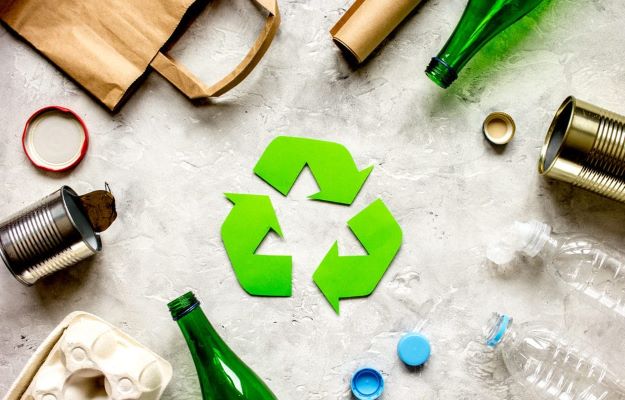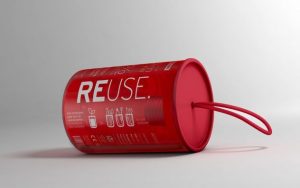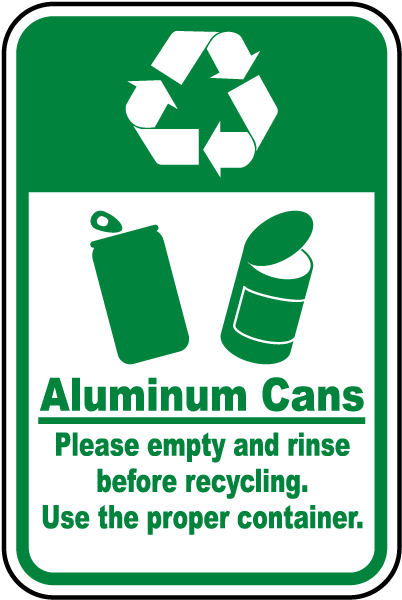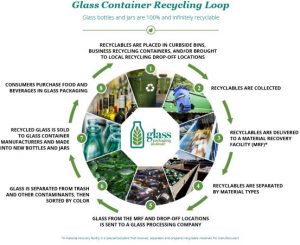Recycle Conundrum: How Many Times Can Recyclables be Recycled?
 Recycling Lives of Recyclables
Recycling Lives of Recyclables
Growing up in the national capital, I do enjoy a bit of an advantage when it comes to information, but recently I discovered that the items which we thought were recyclable also come with a best before date. One of the biggest surprises was plastic then followed by Aluminum. So, read along and know, how many times can all of the blue bin items resurrected. Of course, keep in mind that in India, recycling facilities are still rare, so a lot of the recycling itself involves very inefficient methods.
Plastic: Once or twice
Believe it or not, most plastics can only be recycled once or twice before they are downcycled. This means they are recycled into something of a lesser value. Most of the time, plastic is downcycled into a fabric because it is no longer recyclable after one use. The shoe or fleece or trainers made from plastic bottles can’t be thrown in your blue bin once you are done with them. When it ends up in a landfill, it breaks apart over time and will just sit there for eternity fragmenting into tiny bits. So the next time you think it’s fine to buy plastics because they can be recycled, remember it’s usually one-and-done process.In fact, these are just the bits that eventually find their way into water sources and the oceans, causing a massive crisis there today.
The Only plastics which can be recycled more than once are durable plastics. These items are like bottle caps or our mom’s tupperware. Unfortunately, once these are turned into a recycled item, they would have to be turned into a fabric as its recycled potential is over, just like the plastic from the bottle the cap originated on.
You can check out different types of plastic here
The plastics that are not made from nurdles, are called bioplastics, and are made from things like corn and potatoes starch. Nurdles are the very small orb-like pieces that are created and then melted down into your favourite plastic item. Since bioplastics do not contain nurdles, when they break apart, they actually break down — unlike fuel-based plastics. The only negative thing is they are not recyclable in a traditional sense; that is, they can’t be tossed in the blue bin on the curb. Although these are a step in the right direction, most bioplastic farmers and manufacturing companies still use petroleum and other fuel to grow the actual produce from which the plastic replacing item will be made from.
A great way to avoid becoming a part of this vicious cycle of recycling is to bring your own water bottle with you whenever possible, carry your own straw and have some cutlery at hand. The impact those simple items will make is small, but well worth it. Some great alternatives are metallic water bottles and stainless-steel straws.
Aluminum: Infinite
Your fizzy drink cans can be recycled an unlimited number of times. Yes, you read that right: infinite. Aluminum cans are the one most valuable recycled items and have the highest return rate from the time the can is dropped off at a recycle center or picked up by your garbage man. In fact, it is estimated that more than two-thirds of all the aluminum that has ever been produced is still being used today. Next time you’re thirsty, I highly suggest you grab a cold beverage in a can — you’ll help the environment and make a little money while you’re at it!
Metals: Infinite
Metals are generally categorized into ferrous and non-ferrous metals. All metals have an unlimited lifespan, and it is always a good idea to recycle them, regardless of how much you have. For example, steel is one type of metal that consists primarily of mined ore. By recycling one ton of steel, we can prevent the mining of 2,500 pounds of iron ore, 1,400 pounds of coal, and 120 pounds of limestone.
Paper: Maximum 5 to 7 times
Paper is also as tricky as plastic, as its ability to be recycled is lowered after every reuse. Paper is made up of long fibers, so every time it is recycled, those fibers breaks down and become shorter, which makes it harder to be recycled the next time. The average number of times your printer paper can be recycled is about five to seven times. After that, the fibers will become too short and can’t be made into copier paper. From that point, it can be made into more of a paper paste and can be used for things like newspaper or egg cartons or for the artists ‘papier mache’.
Glass: Infinite
Last but definitely not least is glass. So am I harming the environment by using glass as my container of choice? Absolutely not! Glass, like metal, can be recycled an unlimited number of times. Because glass is harder to create from scratch, it is actually more cost-effective to reuse and recycle glass, making it the best item to buy at the store.
The only thing you have to watch out for is the type of glass. Be sure to ask your local recycle center which types of glass they accept, as different types of glass have different melting points and can’t be recycled together. Think of it this way — if you tried melting coconut oil and a piece of chocolate, the chocolate would melt slower and therefore they wouldn’t be done at the same time.
All in all, you’re a superhero if you recycle in the first place, especially if you live somewhere without a government-funded program. Buying any type of recyclable material is smart. But, if you really want to live a greener lifestyle, always choose glass and metals— regardless of where you live or travel.




